
Brian D. Janssen
MCDB Ph.D.
June 2005 – December 2010
Postdoctoral associate
January 2011 – May 2011
International Distributor Account Manager
Zymo Research
Irvine, CA
1) Garza-Sánchez, F., Janssen, B. D., and C. S. Hayes (2006) Prolyl-tRNAPro in the A-site of SecM-arrested ribosomes inhibits the recruitment of transfer-messenger RNA. Journal of Biological Chemistry 281:34258-34268
2) Janssen, B. D. and C. S. Hayes (2009) Kinetics of paused ribosome recycling in Escherichia coli. Journal of Molecular Biology 394:251-267
3) Shoji, S., Janssen, B. D., Hayes, C. S., and K. Fredrick (2010) Translation factor LepA contributes to tellurite resistance in Escherichia coli but plays no apparent role in the fidelity of protein synthesis. Biochimie 92:157-163
4) Garza-Sánchez, F., Schaub, R. E., Janssen, B. D., and C. S. Hayes (2011) tmRNA regulates synthesis of the ArfA ribosome rescue factor. Molecular Microbiology 80:1204-1219
5) Seidman, J. S., Janssen, B. D., and C. S. Hayes (2011) Alternative fates of paused ribosomes during translation termination. Journal of Biological Chemistry 286:31105-31112
6) Janssen, B. D., and C. S. Hayes (2012) The tmRNA ribosome-rescue system. Advances in Protein Chemistry and Structural Biology 86:151-191
7) Janssen, B. D., Diner, E. J. and C. S. Hayes (2012) Analysis of aminoacyl- and peptidyl-tRNAs by gel electrophoresis. Methods in Molecular Biology 905:291-309
8) Janssen, B. D., Garza-Sánchez, F. and C. S. Hayes (2013) A-site mRNA cleavage is not required for tmRNA-mediated ssrA-peptide tagging. PLoS ONE 8:e81319
9) Janssen, B. D., Garza-Sánchez, F. and C. S. Hayes (2015) YoeB toxin is activated during thermal stress. MicrobiologyOpen 4:682-689
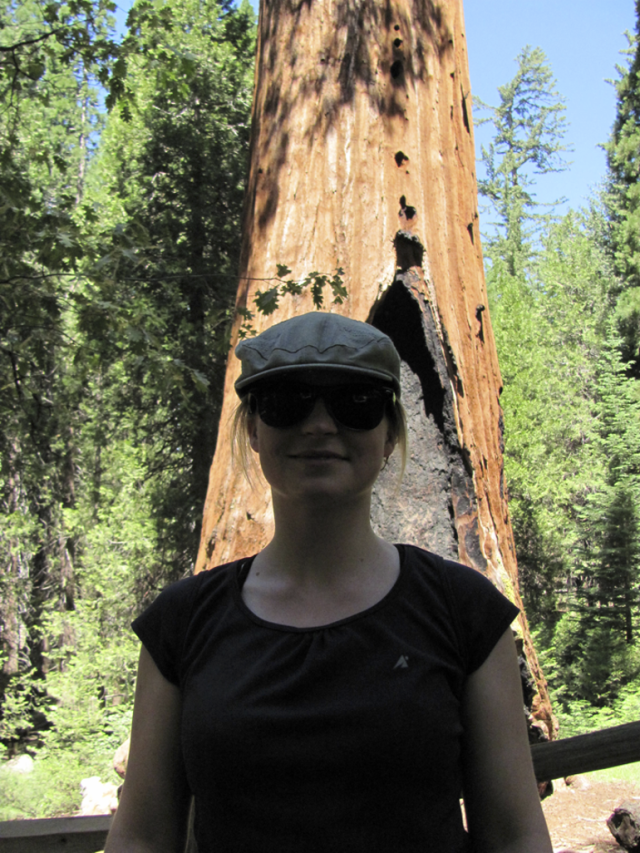
Laura E. Holberger
MCDB Ph.D.
June 2006 – May 2011
Co-Creation Architect
Novo Nordisk, Cambridge, MA
1) Holberger, L. E. and C. S. Hayes (2009) Ribosomal protein S12 and aminoglycoside antibiotics modulate A-site mRNA cleavage and transfer-messenger RNA activity in Escherichia coli. Journal of Biological Chemistry 284:32188-32200
2) Holberger, L. E., Garza-Sánchez, F., Lamoureux, J., Low, D. A., and C. S. Hayes (2012) A novel family of toxin/antitoxin proteins in Bacillus species. FEBS Letters 586:132-136
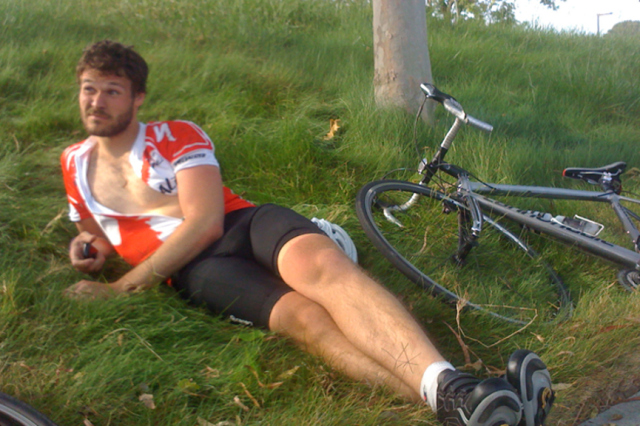
Elie J. Diner
BMSE Ph.D.
June 2007 – September 2011
SEO Strategist for Biotech
Werd Lab
Germantown, TN
1) Diner, E. J. and C. S. Hayes (2009) Recombineering reveals a diverse collection of ribosomal proteins L4 and L22 that confer resistance to macrolide antibiotics. Journal of Molecular Biology 386:300-315
2) Aoki, S. K., Diner, E. J., t’Kint de Roodenbeke, C., Burgess, B. R., Poole, S. J., Braaten, B. A., Jones, A. M., Webb, J. S., Hayes, C. S., Cotter, P. A., and D. A. Low (2010) A widespread family of polymorphic contact-dependent toxin delivery systems in bacteria. Nature 468:439-442
3) Diner, E. J., Garza-Sánchez, F., and C. S. Hayes (2011) Genome engineering using targeted oligonucleotide libraries and functional selection. Methods in Molecular Biology 765:71-82
4) Poole, S. J., Diner, E. J., Aoki, S. K., t’Kint de Roodenbeke, Braaten, B. A., Low, D. A., and C. S. Hayes (2011) Identification of functional toxin/immunity genes linked to contact-dependent growth inhibition (CDI) and rearrangement hotspot (Rhs) systems. PLoS Genetics 7:e1002217
5) Diner, E. J., Beck, C. M., Webb, J. S., Low, D. A. and C. S. Hayes (2012) Identification of a target cell permissive factor required for contact-dependent growth inhibition (CDI). Genes and Development 26:515-525
6) Nikolakakis, K., Amber, S., Diner, E. J., Aoki, S. K., Poole, S. J., Tuanyok, A., Keim, P., Peacock, S., Hayes, C. S. and D. A. Low (2012) The toxin/immunity network of Burkholderia pseudomallei contact--dependent growth inhibition (CDI) systems. Molecular Microbiology 84:516-529
7) Janssen, B. D., Diner, E. J. and C. S. Hayes (2012) Analysis of aminoacyl- and peptidyl-tRNAs by gel electrophoresis. Methods in Molecular Biology 905:291-309
8) Beck, C. M., Diner, E. J., Kim, J. J., Low, D. A. and C. S. Hayes (2014) The F pilus mediates a novel pathway of CDI toxin import. Molecular Microbiology 93:276-290
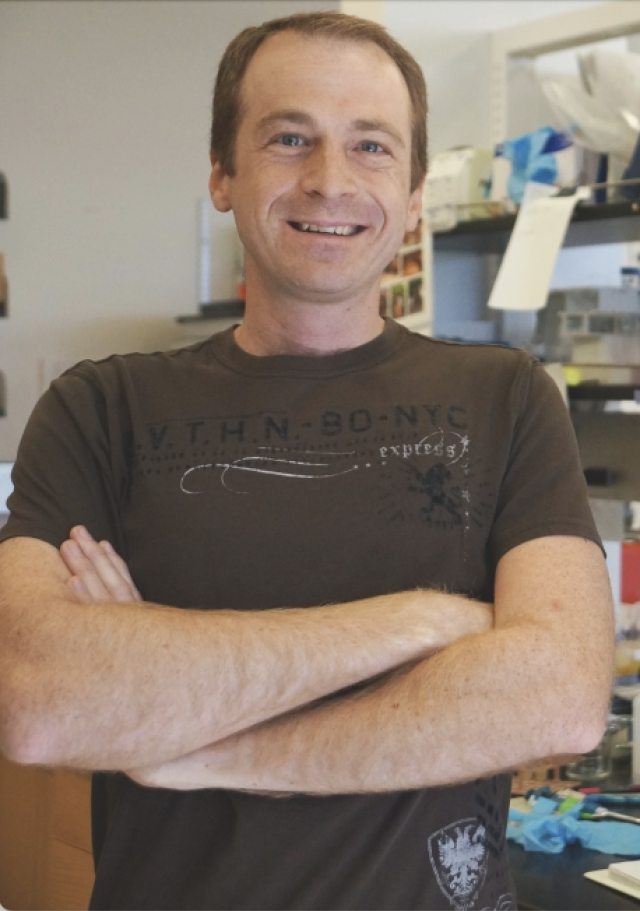
Zachary C. Ruhe
MCDB Ph.D.
June 2007 – September 2012
Postdoctoral fellow/Specialist
October 2012 – January 2020
Director of Research and Development,
Affinity Biosensors, Santa Barbara, CA
1) Ruhe, Z. C., and C. S. Hayes (2010) The N-terminus of GalE induces tmRNA activity in Escherichia coli. PLoS ONE 5:e15207
2) Ruhe, Z. C., Low, D. A. and C. S. Hayes (2013) Bacterial contact-dependent growth inhibition (CDI). Trends in Microbiology 21:230-237
3) Ruhe, Z. C., Wallace, A. B., Low, D. A. and C. S. Hayes (2013) Receptor polymorphism restricts contact-dependent growth inhibition to members of the same species. mBio 4:e00480-13
4) Hayes, C. S., Koskiniemi, S., Ruhe, Z. C., Poole, S. J. and D. A. Low (2014) Mechanisms and biological roles of contact-dependent growth inhibition (CDI) systems. Cold Spring Harbor Perspectives in Medicine 4:a010025
5) Ruhe, Z. C., Nguyen, J. Y., Beck, C. M., Low, D. A. and C. S. Hayes (2014) The proton-motive force is required for translocation of CDI toxins across the inner membrane of target bacteria. Molecular Microbiology 94:466-481
6) Ruhe, Z. C., Townsley, L., Wallace, A. B., King, A., Van der Woude, M. W., Low, D. A., Yildiz, F. H., and C. S. Hayes (2015) CdiA promotes receptor-independent intercellular adhesion. Molecular Microbiology 198:175-192
7) Ruhe, Z. C., Hayes, C. S. and D. A. Low (2015) Measuring cell-cell binding using flow-cytometry. Methods in Molecular Biology 1329:127-136
8) Willett, J. L. E., Ruhe, Z. C., Goulding, C. W., Low, D. A. and C. S. Hayes (2015) Contact-dependent growth inhibition (CDI) and the CdiB/CdiA family of two-partner secretion proteins. Journal of Molecular Biology 427:3754-3765
9) Ruhe, Z. C., Nguyen, J. Y., Chen, A. J., Leung, N. Y., Hayes, C. S. and D. A. Low (2016) CDI systems are stably maintained by a cell-contact mediated surveillance mechanism. PLOS Genetics 12:e1006145
10) Ruhe, Z. C., Nguyen, J. Y., Xiong, J., Koskiniemi, S, Beck, C. M., Perkins, B. R., Low, D. A. and C. S. Hayes (2017) Toxic CdiA effectors recognize target bacteria using modular receptor-binding domains. mBio 8:e00290-17
11) Ruhe, Z. C., Subramanian, P., Song, K., Nguyen, J. Y., Stevens, T. A., Low, D. A., Jenson, G. J., and C. S. Hayes (2018) Programmed secretion arrest and receptor-triggered toxin export during antibacterial contact-dependent growth inhibition. Cell 175:921-933
12) Ruhe, Z. C., Low, D. A. and C. S. Hayes (2020) Polymorphic toxins and their immunity proteins: diversity, evolution, and mechanisms of delivery. Annual Review of Microbiology 74:497-520
13) Donato, S. L., Beck, C. M., Garza-Sánchez, F., Jensen, S. J., Ruhe, Z. C., Cunningham, D. A., Singleton, I., Low, D. A. and C. S. Hayes (2020) The β-encapsulation cage of rearrangement hotspot (Rhs) effectors is required for type VI secretion. Proceedings of the National Academy of Sciences U. S. A. 117:33540-33548
14) Halvorsen, T. M, Garza-Sánchez, F., Ruhe, Z. C., Bartelli, N. L., Chan, N. A., Nguyen, J. Y., Low, D. A. and C. S. Hayes (2021) Lipidation of class IV CdiA effector proteins promotes target-cell recognition during contact-dependent growth inhibition (CDI). mBio 12:e0253021
15) Jensen, S. J., Ruhe, Z. C., Williams, A. F., Nhan, D. Q., Garza-Sánchez, F., Low, D. A., C. S. Hayes (2023) Paradoxical activation of a type VI secretion system phospholipase effector by its cognate immunity protein. Journal of Bacteriology 205:e00113-23
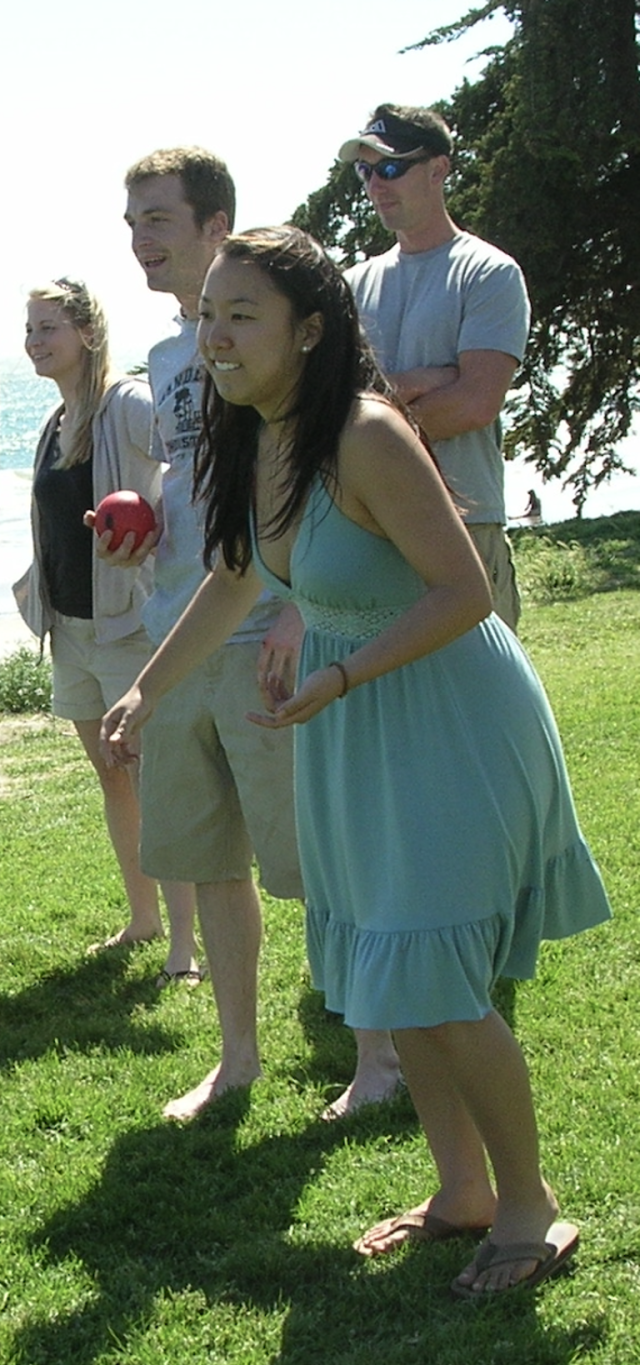
Jennifer G. Gin
MCDB B.S.
September 2006 – August 2007
MCDB M.A.
September 2007 – August 2009
Pharmacist
Scripps Encinitas Memorial Hospital
1) Garza-Sánchez, F., Gin, J. G., and C. S. Hayes (2008) Amino acid starvation and colicin D treatment induce A-site mRNA cleavage in Escherichia coli. Journal of Molecular Biology 378:505-519

Jason S. Seidman
MCDB B.S.
July 2007 – June 2008
MCDB M.A.
September 2008 – September 2010
Resident Physician
Department of Dermatology
University of California, San Diego
1) Seidman, J. S., Janssen, B. D., and C. S. Hayes (2011) Alternative fates of paused ribosomes during translation termination. Journal of Biological Chemistry 286:31105-31112
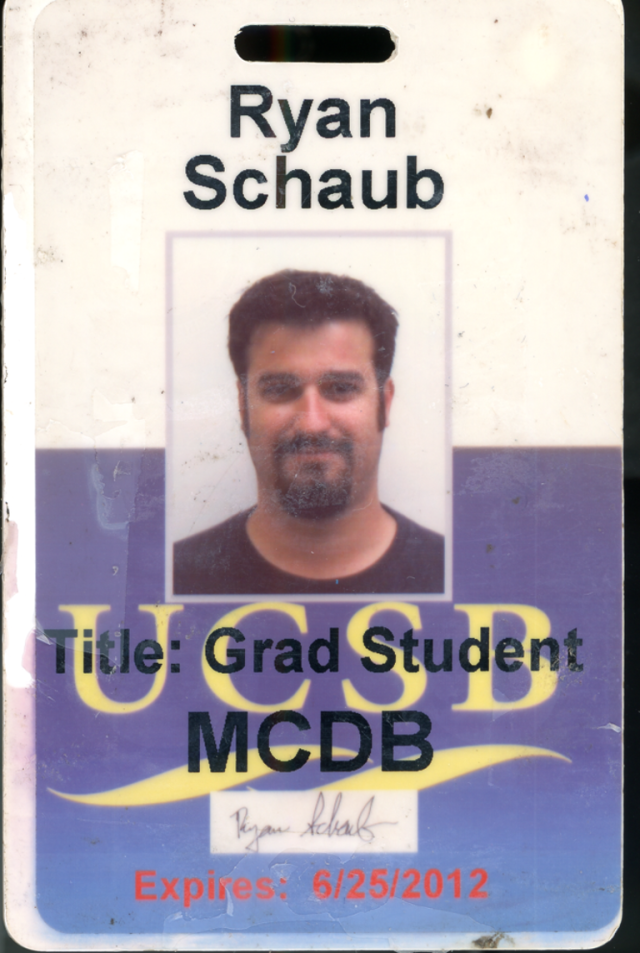
Ryan E. Schaub
MCDB Ph. D.
June 2008 – July 2012
Project Scientist
Department of Medical Microbiology and Immunology
University of Wisconsin – Madison
1) Schaub, R. E., and C. S. Hayes (2011) Deletion of the RluD pseudouridine synthase promotes ssrA peptide tagging of ribosomal protein S7. Molecular Microbiology 79:331-341
2) Garza-Sánchez, F., Schaub, R. E., Janssen, B. D., and C. S. Hayes (2011) tmRNA regulates synthesis of the ArfA ribosome rescue factor. Molecular Microbiology 80:1204-1219
3) Schaub, R. E., Poole, S. J., Garza-Sánchez, F., Benbow, S. and C. S. Hayes (2012) Proteobacterial ArfA peptides are synthesized from non-stop messenger RNAs. Journal of Biological Chemistry 287:29765-29775
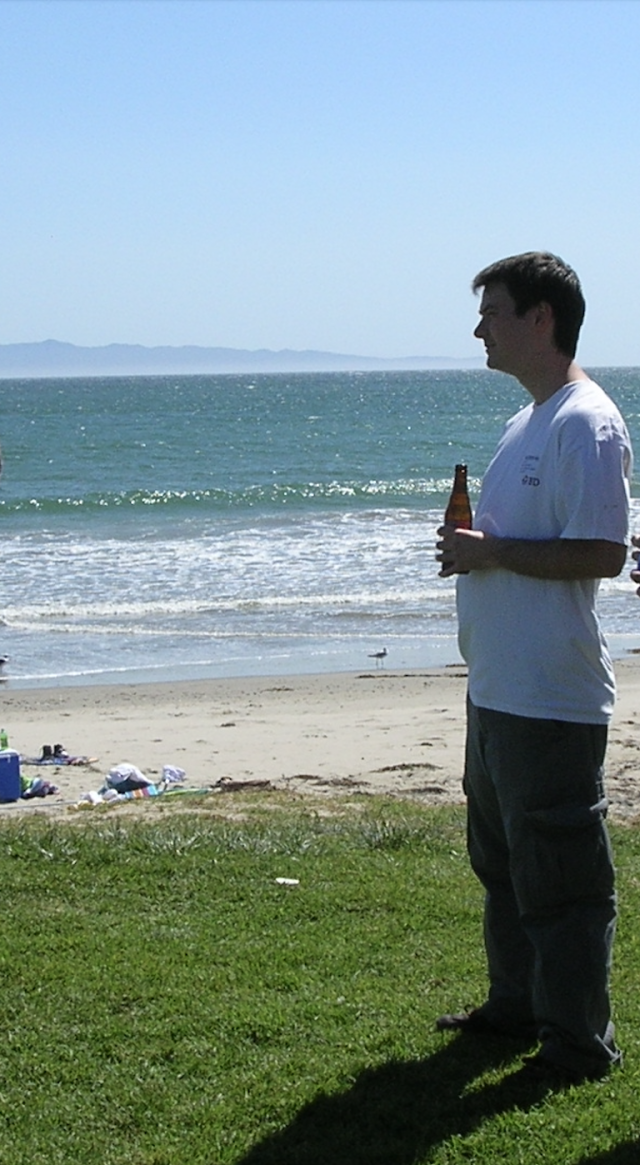
Michael L. Hayes
Post-doctoral associate
March 2008 – March 2009
Associate Professor
Department of Chemistry and Biochemistry
California State University, Los Angeles
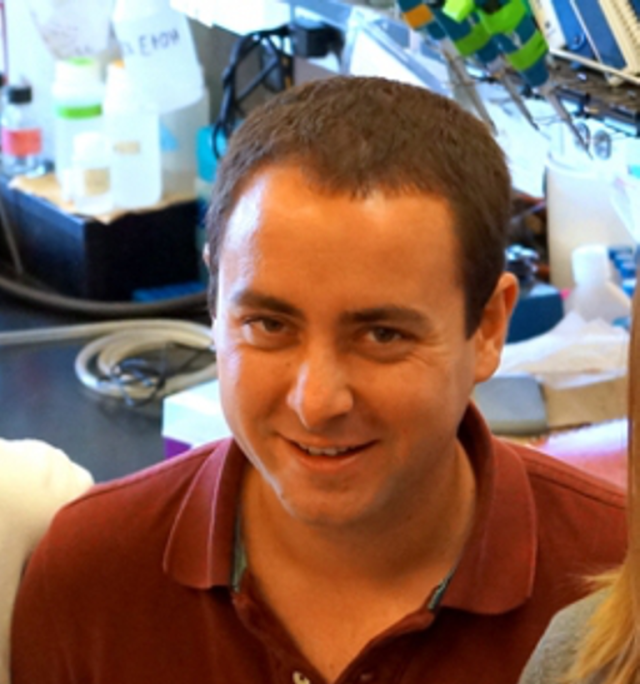
James G. Lamoureux
MCDB Ph. D.
June 2010 – September 2015
Research Scientist
Cybele Microbiome
San Diego, CA
1) Holberger, L. E., Garza-Sánchez, F., Lamoureux, J., Low, D. A., and C. S. Hayes (2012) A novel family of toxin/antitoxin proteins in Bacillus species. FEBS Letters 586:132-136
2) Koskiniemi, S., Lamoureux, J. G., Nikolakakis, K. C., t’Kint de Roodenbeke, C., Kaplan, M. D., Low, D. A. and C. S. Hayes (2013) Rhs proteins from diverse bacteria mediate intercellular competition. Proceedings of the National Academy of Sciences U.S.A. 110:7032-7037
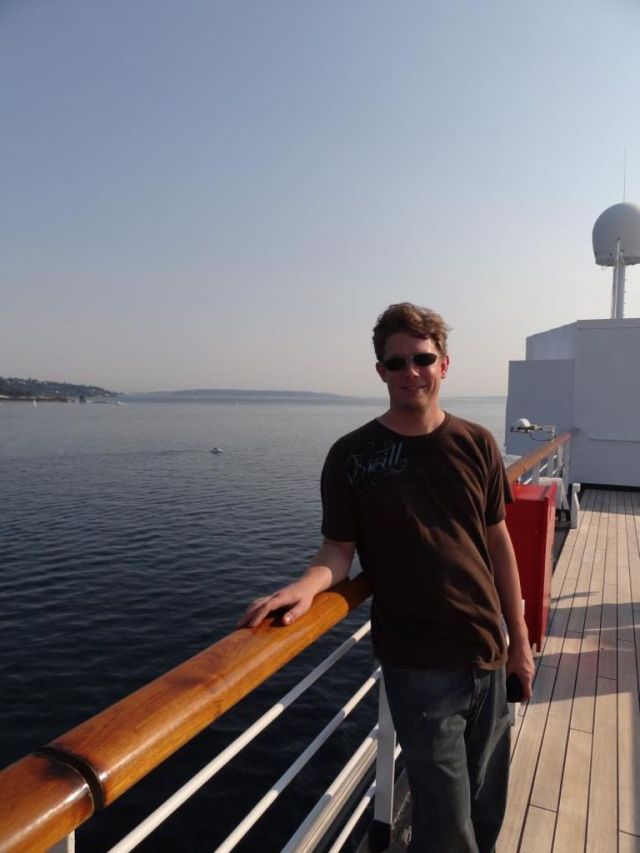
Kiel C. Nikolakakis
Chemistry & Biochemistry Ph.D.
April 2010 – May 2013
Assistant Professor of Teaching
University of Wisconsin – Green Bay
1) Nikolakakis, K., Amber, S., Diner, E. J., Aoki, S. K., Poole, S. J., Tuanyok, A., Keim, P., Peacock, S., Hayes, C. S. and D. A. Low (2012) The toxin/immunity network of Burkholderia pseudomallei contact--dependent growth inhibition (CDI) systems. Molecular Microbiology 84:516-529
2) Morse, R. P., Nikolakakis, K. C., Willett, J. L. E., Gerrick, E., Low, D. A., Hayes, C. S. and C. W. Goulding (2012) Structural basis for toxicity and immunity in contact-dependent growth inhibition (CDI) systems. Proceedings of the National Academy of Sciences U.S.A. 109:21480-21485
3) Webb, J. S., Nikolakakis, K. C., Willett, J. L. E., Aoki, S. K., Hayes, C. S. and D. A. Low (2013) Delivery of CdiA nuclease toxins into target cells during contact-dependent growth inhibition (CDI). PLoS ONE 8:e57609
4) Koskiniemi, S., Lamoureux, J. G., Nikolakakis, K. C., t’Kint de Roodenbeke, C., Kaplan, M. D., Low, D. A. and C. S. Hayes (2013) Rhs proteins from diverse bacteria mediate intercellular competition. Proceedings of the National Academy of Sciences U.S.A. 110:7032-7037
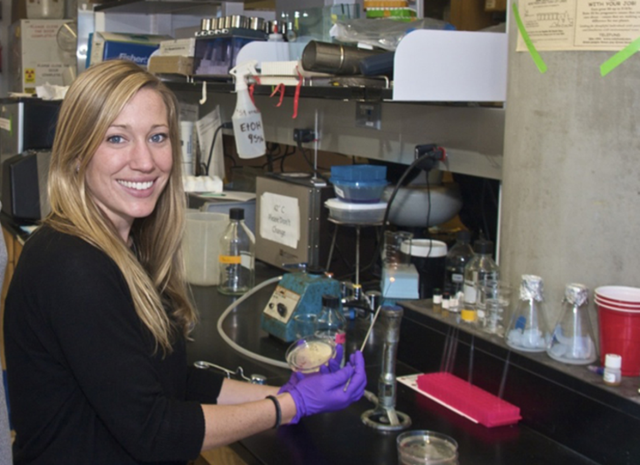
Christina M. Beck
MCDB B.S.
June 2010 - June 2011
MCDB M.A.
September 2011 – January 2013
MCDB Ph.D.
February 2013 – July 2015
Resident Physician
Department of Surgery
University of Washington School of Medicine
Seattle, WA
1) Diner, E. J., Beck, C. M., Webb, J. S., Low, D. A. and C. S. Hayes (2012) Identification of a target cell permissive factor required for contact-dependent growth inhibition (CDI). Genes and Development 26:515-525
2) Beck, C. M., Morse, R. P., Cunningham, D. A., Iniquez, I., Low, D. A., Goulding, C. W. and C. S. Hayes (2014) CdiA from Enterobacter cloacae delivers a toxic ribosomal RNase into target bacteria. Structure 22:707-718
3) Whitney, J. C., Beck, C. M., Goo, Y. A., Russell, A. B., Harding, B., De Leon, J. A., Cunningham, D. A., Tran, B. Q., Low, D. A., Goodlett, D. R., Hayes, C. S. and J. D. Mougous (2014) Genetically distinct pathways guide effector export by the type VI secretion system. Molecular Microbiology 92:529-542
4) Beck, C. M., Diner, E. J., Kim, J. J., Low, D. A. and C. S. Hayes (2014) The F pilus mediates a novel pathway of CDI toxin import. Molecular Microbiology 93:276-290
5) Ruhe, Z. C., Nguyen, J. Y., Beck, C. M., Low, D. A. and C. S. Hayes (2014) The proton-motive force is required for translocation of CDI toxins across the inner membrane of target bacteria. Molecular Microbiology 94:466-481
6) Campanini, B., Benoni, R., Bettati, S., Beck, C. M., Hayes, C. S., and A. Mozzarelli (2015) Moonlighting O-acetylserine sulfhydrylase: new functions for an old protein. Biochimica et Biophysica Acta 1854:1184-1193
7) Johnson, P. M., Beck, C. M., Morse, R. P., Garza-Sánchez, F., Low, D. A., Hayes, C. S. and C. W. Goulding (2016) Unraveling the essential role of CysK in CDI toxin activation. Proceedings of the National Academy of Sciences U.S.A. 113:9792-9797
8) Beck, C. M., Willett, J. L. E., Cunningham, D. A., Kim, J. J., Low, D. A. and C. S. Hayes (2016) CdiA effectors from uropathogenic Escherichia coli use heterotrimeric osmoporins as receptors to recognize target bacteria. PLOS Pathogens 12:e1005925
9) Ruhe, Z. C., Nguyen, J. Y., Xiong, J., Koskiniemi, S, Beck, C. M., Perkins, B. R., Low, D. A. and C. S. Hayes (2017) Toxic CdiA effectors recognize target bacteria using modular receptor-binding domains. mBio 8:e00290-17
10) Benoni, R., Beck, C. M., Garza-Sánchez, F., Betatti, S., Mozzarelli, A., Hayes C. S., and B. Campanini (2017) Activation of an anti-bacterial toxin by the biosynthetic enzyme CysK: mechanism of binding, interaction specificity and competition with cysteine synthase. Scientific Reports 7:8817
11) Donato, S. L., Beck, C. M., Garza-Sánchez, F., Jensen, S. J., Ruhe, Z. C., Cunningham, D. A., Singleton, I., Low, D. A. and C. S. Hayes (2020) The β-encapsulation cage of rearrangement hotspot (Rhs) effectors is required for type VI secretion. Proceedings of the National Academy of Sciences U. S. A. 117:33540-33548
Michael D. Kaplan
MCDB M.S.
June 2011 – April 2014
Associate Scientist
Inhibrx, Inc.
San Diego, CA
1) Koskiniemi, S., Lamoureux, J. G., Nikolakakis, K. C., t’Kint de Roodenbeke, C., Kaplan, M. D., Low, D. A. and C. S. Hayes (2013) Rhs proteins from diverse bacteria mediate intercellular competition. Proceedings of the National Academy of Sciences U.S.A. 110:7032-7037
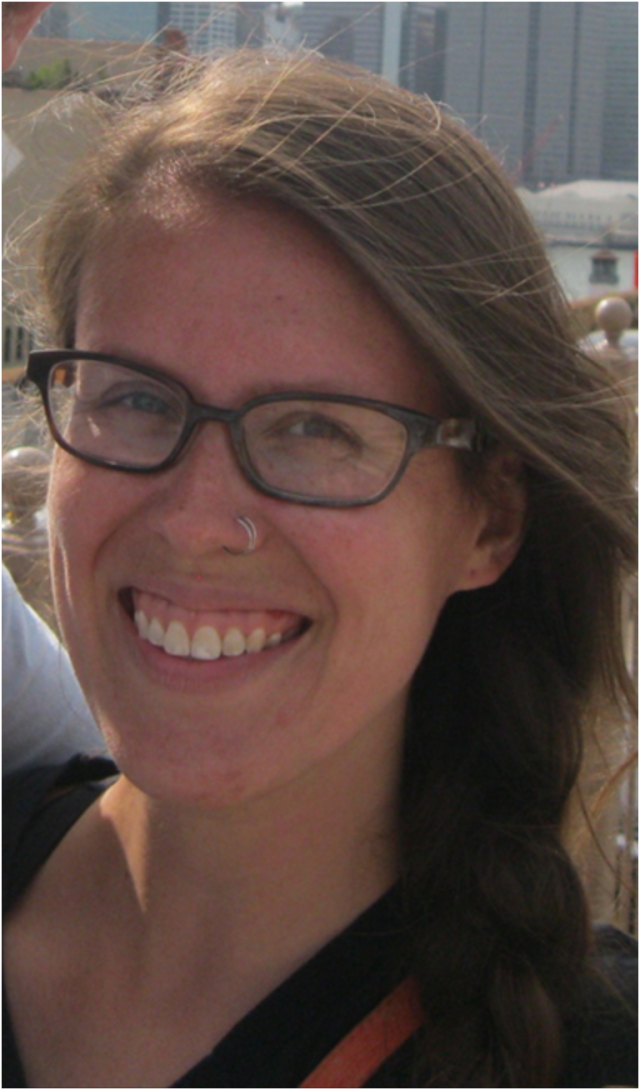
Julia L. E. Willett
MCDB Ph.D.
June 2011 – March 2016
Postdoctoral associate
April 2016 – July 2016
Assistant Professor
Department of Microbiology & Immunology
University of Minnesota Medical School
Minneapolis, MN
1) Morse, R. P., Nikolakakis, K. C., Willett, J. L. E., Gerrick, E., Low, D. A., Hayes, C. S. and C. W. Goulding (2012) Structural basis for toxicity and immunity in contact-dependent growth inhibition (CDI) systems. Proceedings of the National Academy of Sciences U.S.A. 109:21480-21485
2) Webb, J. S., Nikolakakis, K. C., Willett, J. L. E., Aoki, S. K., Hayes, C. S. and D. A. Low (2013) Delivery of CdiA nuclease toxins into target cells during contact-dependent growth inhibition (CDI). PLoS ONE 8:e57609
3) Willett, J. L. E., Gucinski, G. C., Fatherree, J., Low, D. A., and C. S. Hayes (2015) Contact-dependent growth inhibition (CDI) toxins exploit multiple independent cell-entry pathways. Proceedings of the National Academy of Sciences U.S.A. 112:11341-11346
4) Willett, J. L. E., Ruhe, Z. C., Goulding, C. W., Low, D. A. and C. S. Hayes (2015) Contact-dependent growth inhibition (CDI) and the CdiB/CdiA family of two-partner secretion proteins. Journal of Molecular Biology 427:3754-3765
5) Morse, R. P., Willett, J. L. E., Johnson, P. M., Zhang, M., Credali, A., Iniguez, A., Nowick, J. S., Hayes, C. S. and C. W. Goulding (2015) Diversification of β-augmentation interactions between CDI toxin/immunity proteins. Journal of Molecular Biology 427:3766-3784
6) Beck, C. M., Willett, J. L. E., Cunningham, D. A., Kim, J. J., Low, D. A. and C. S. Hayes (2016) CdiA effectors from uropathogenic Escherichia coli use heterotrimeric osmoporins as receptors to recognize target bacteria. PLOS Pathogens 12:e1005925
7) Michalska, K., Nhan, D. Q., Willett, J. L. E., Stols, L., Eschenfeld, W. H., Jones, A. M., Nguyen, J. Y., Koskiniemi, S., Low, D. A., Goulding, C. W., Joachimiak, A., and C. S. Hayes (2018) Functional plasticity of antibacterial EndoU toxins. Molecular Microbiology 109:509-527
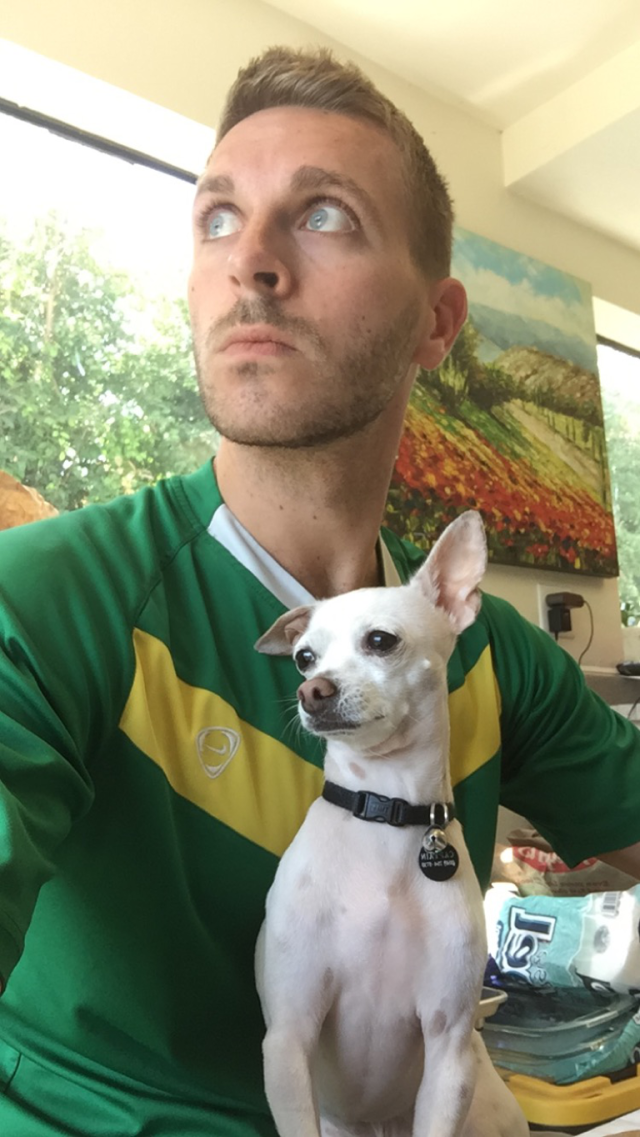
Grant C. Gucinski
BMSE Ph.D.
June 2012 – December 2017
Postdoctoral associate
January 2018 – December 2018
Scientist II
Cue Health Inc.
San Diego, CA
1) Willett, J. L. E., Gucinski, G. C., Fatherree, J., Low, D. A., and C. S. Hayes (2015) Contact-dependent growth inhibition (CDI) toxins exploit multiple independent cell-entry pathways. Proceedings of the National Academy of Sciences U.S.A. 112:11341-11346
2) Johnson, P. M., Gucinski, G. C., Garza-Sánchez, F., Wong, T., Hung, L.-W., Hayes, C. S. and C. W. Goulding (2016) Functional diversity of cytotoxic tRNase/immunity protein complexes from Burkholderia pseudomallei. Journal of Biological Chemistry 291:19387-19400
3) Michalska, K., Gucinski, G. C., Garza-Sánchez, F., Johnson, P. M., Stols, L., Eschenfeldt, W. H., Babnigg, G., Low, D. A., Goulding, C. W., Joachimiak, A., and C. S. Hayes (2017) Structure of a novel antibacterial toxin that exploits elongation factor Tu to cleave specific tRNAs. Nucleic Acids Research 45:10306-10320
4) Bartelli, N. L., Sun, S., Gucinski, G. C., Zhou, H., Song, K., Hayes, C. S. and F. W. Dahlquist (2019) The cytoplasm-entry domain of antibacterial CdiA is a dynamic α-helical bundle with disulfide-dependent structural features. Journal of Molecular Biology 431:3203-3216
5) Gucinski, G. C, Michalska, K., Garza-Sánchez, F., Eschenfeldt, W. H., Stols, L., Nguyen, J. Y., Goulding, C. W., Joachimiak, A. and C. S. Hayes (2019) Convergent evolution of the barnase/EndoU/colicin/RelE (BECR) fold in antibacterial tRNase toxins. Structure 27:1660-1674
Hayley Finkelstein
MCDB M.S.
June 2012 – September 2012
1) Vassallo, C. N., Cao, P., Conklin, A., Finkelstein, H., Hayes, C. S. and D. Wall (2017) Infectious polymorphic toxins delivered by outer membrane exchange discriminate kin in myxobacteria. eLife 6:e29397
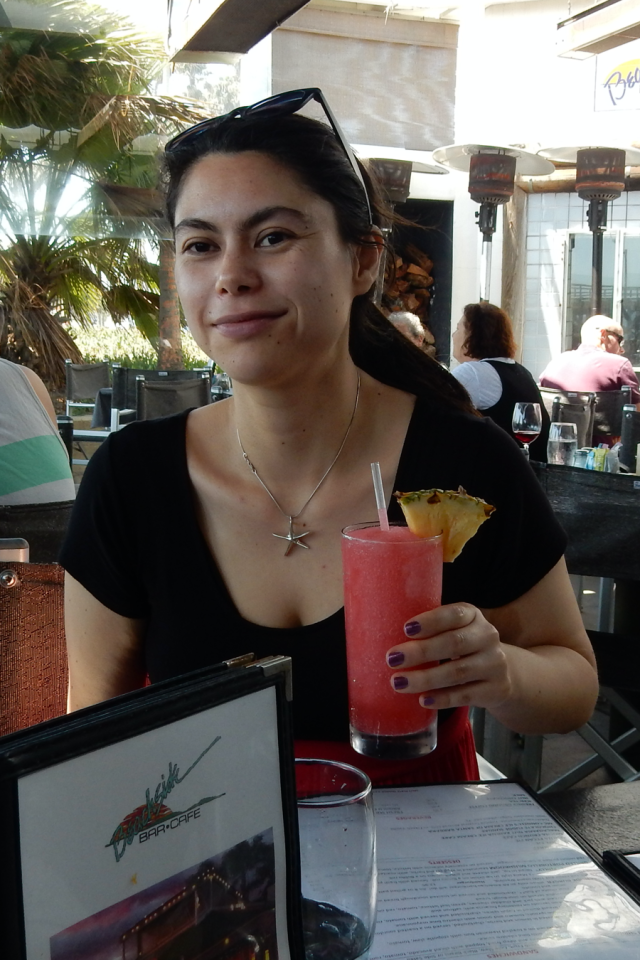
Sonya L. Donato
MCDB Ph.D.
June 2013 – September 2019
Staff Research Associate
School of Medicine
University of California, San Diego
1) Donato, S. L., Beck, C. M., Garza-Sánchez, F., Jensen, S. J., Ruhe, Z. C., Cunningham, D. A., Singleton, I., Low, D. A. and C. S. Hayes (2020) The β-encapsulation cage of rearrangement hotspot (Rhs) effectors is required for type VI secretion. Proceedings of the National Academy of Sciences U. S. A. 117:33540-33548
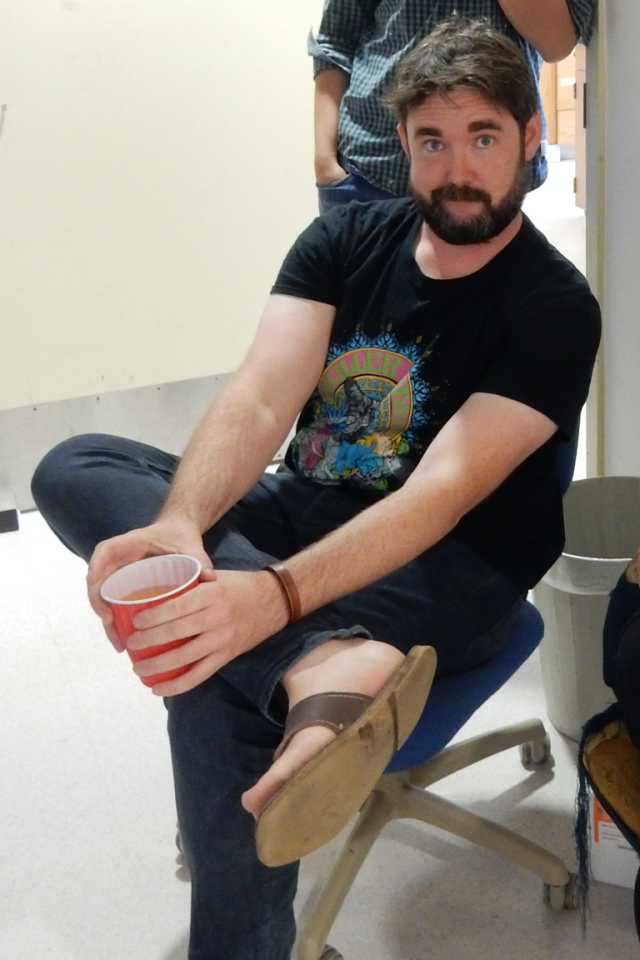
Greg Ekberg
MCDB Ph. D.
June 2014 – May 2020
Scientist
Seqirus
Holly Springs, NC
1) Batot, G., Michalska, K., Ekberg, G., Irimpan, E. M., Joachimiak, G., Jedrzejczak, R., Babnigg, G., Hayes C. S., Joachimiak, A., and C. W. Goulding (2017) The CDI toxin of Yersinia kristensenii is a novel bacterial member of the RNase A superfamily. Nucleic Acids Research 45:5013-5025
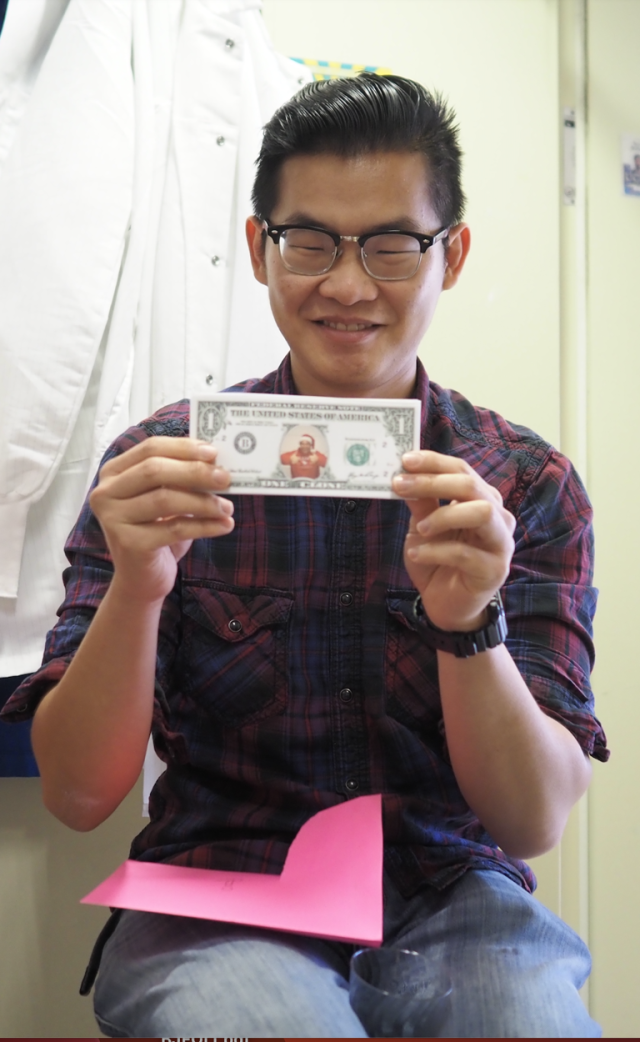
Dinh Quan Nhan
MCDB B.S.
June 2014 – March 2016
Lab Assistant
June 2016 – September 2017
MCDB Ph. D.
September 2017 – December 2023
Postdoctoral Associate
Cedars-Sinai Medical Center
Los Angeles, CA
1) Michalska, K., Nhan, D. Q., Willett, J. L. E., Stols, L., Eschenfeld, W. H., Jones, A. M., Nguyen, J. Y., Koskiniemi, S., Low, D. A., Goulding, C. W., Joachimiak, A., and C. S. Hayes (2018) Functional plasticity of antibacterial EndoU toxins. Molecular Microbiology 109:509-527
2) Bartelli, N. L., Passanisi, V. J., Michalska, K., Song, K., Nhan, D. Q., Zhou, H., Cuthbert, B. J., Stols, L. M., Eschenfeldt, W. H., Wilson, N. G., Basra, J. S., Cortes, R., Noorsher, Z., Gabraiel, Y., Poonen-Honig, I., Seacord, E. C., Goulding, C. W., Low, D. A., Joachimiak, A., Dahlquist, F. W. and C. S. Hayes (2022) Proteolytic processing induces a conformational switch required for antibacterial toxin delivery. Nature Communications 13:5078
Tiffany M. Halvorsen
BMSE Ph. D.
July 2015 – December 2020
Postdoctoral Researcher
Lawrence Livermore National Laboratory
Livermore, CA
1) Wäneskog, M., Halvorsen, T., Filek, K., Xu, F., Hammarlöf, D. L, Hayes, C. S., Braaten, B., Low, D. A., Poole, S. J. and S. Koskiniemi (2021) E. coli EC93 deploys two plasmid-encoded class I CDI systems for antagonistic bacterial interactions. Microbial Genomics 7:000534
2) Halvorsen, T. M, Garza-Sánchez, F., Ruhe, Z. C., Bartelli, N. L., Chan, N. A., Nguyen, J. Y., Low, D. A. and C. S. Hayes (2021) Lipidation of class IV CdiA effector proteins promotes target-cell recognition during contact-dependent growth inhibition (CDI). mBio 12:e0253021
3) Wang, Q., Kim, H., Halvorsen, T. M., S. Chen, Hayes, C. S. and C. R. Buie (2022) Leveraging microfluidic dielectrophoresis to distinguish compositional variations of lipopolysaccharide in E. coli. Frontiers in Bioengineering and Biotechnology 11:991784
4) Halvorsen, T. M., Schroeder, K. A., Jones, A. M., Hammarlöf, D., Low, D. A., Koskiniemi, S. and C. S. Hayes (2024) Contact-dependent growth inhibition (CDI) systems deploy a large family of polymorphic ionophoric toxins for inter-bacterial competition. PLOS Genetics 20:e1011494
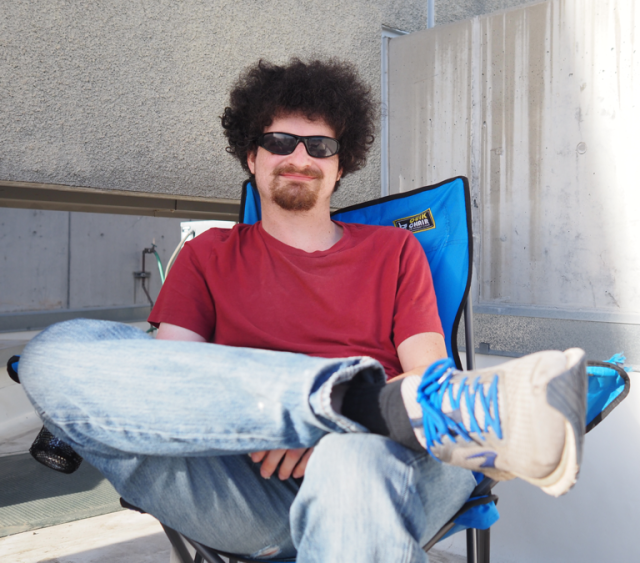
Steven J. Jensen
MCDB Ph. D.
June 2016 – September 2024
Postdoctoral Associate
Buck Institute for Research on Aging
Novato, CA
1) Donato, S. L., Beck, C. M., Garza-Sánchez, F., Jensen, S. J., Ruhe, Z. C., Cunningham, D. A., Singleton, I., Low, D. A. and C. S. Hayes (2020) The β-encapsulation cage of rearrangement hotspot (Rhs) effectors is required for type VI secretion. Proceedings of the National Academy of Sciences U. S. A. 117:33540-33548
2) Jensen, S. J., Ruhe, Z. C., Williams, A. F., Nhan, D. Q., Garza-Sánchez, F., Low, D. A., C. S. Hayes (2023) Paradoxical activation of a type VI secretion system phospholipase effector by its cognate immunity protein. Journal of Bacteriology 205:e00113-23
3) Jensen, S. J., Cuthbert, B. J., Garza-Sánchez, F., Helou, C. C., de Miranda, R., Goulding, C. W. and C. S. Hayes (2024) Advanced glycation end-product crosslinking activates a type VI secretion system phospholipase effector protein. Nature Communications 15:8804
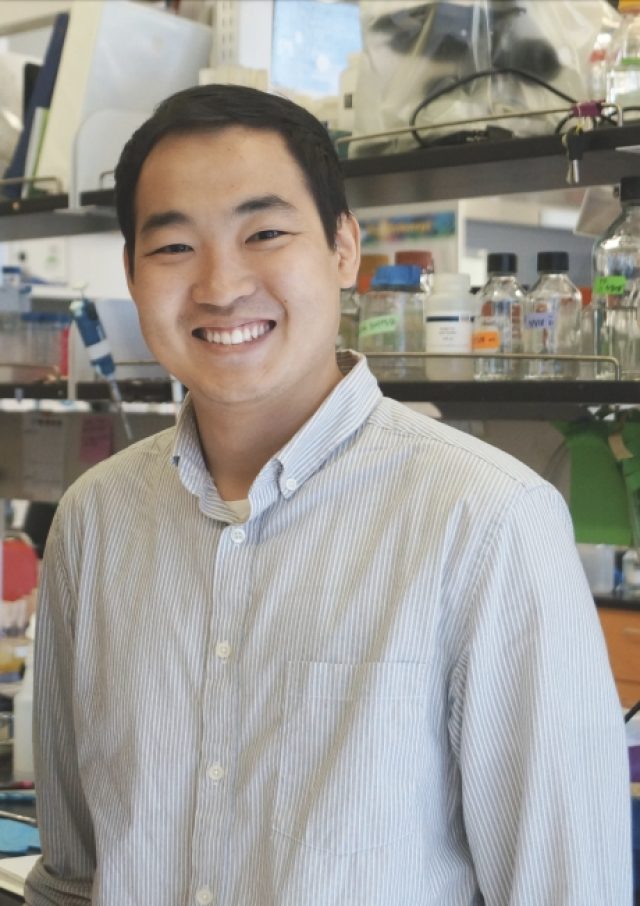
Kiho Song
BMSE Ph. D.
June 2016 – June 2020
Associate Principal Scientist
Kodiak Sciences
Palo Alto, CA
1) Ruhe, Z. C., Subramanian, P., Song, K., Nguyen, J. Y., Stevens, T. A., Low, D. A., Jenson, G. J., and C. S. Hayes (2018) Programmed secretion arrest and receptor-triggered toxin export during antibacterial contact-dependent growth inhibition. Cell 175:921-933
2) Bartelli, N. L., Sun, S., Gucinski, G. C., Zhou, H., Song, K., Hayes, C. S. and F. W. Dahlquist (2019) The cytoplasm-entry domain of antibacterial CdiA is a dynamic α-helical bundle with disulfide-dependent structural features. Journal of Molecular Biology 431:3203-3216
3) Bartelli, N. L., Passanisi, V. J., Michalska, K., Song, K., Nhan, D. Q., Zhou, H., Cuthbert, B. J., Stols, L. M., Eschenfeldt, W. H., Wilson, N. G., Basra, J. S., Cortes, R., Noorsher, Z., Gabraiel, Y., Poonen-Honig, I., Seacord, E. C., Goulding, C. W., Low, D. A., Joachimiak, A., Dahlquist, F. W. and C. S. Hayes (2022) Proteolytic processing induces a conformational switch required for antibacterial toxin delivery. Nature Communications 13:5078

Nicholas L. Bartelli
Post-doctoral fellow
August 2016 – August 2020
Project Scientist
September 2020 – May 2022
Senior Research Scientist
Change Foods
San Jose, CA
1) Bartelli, N. L., Sun, S., Gucinski, G. C., Zhou, H., Song, K., Hayes, C. S. and F. W. Dahlquist (2019) The cytoplasm-entry domain of antibacterial CdiA is a dynamic α-helical bundle with disulfide-dependent structural features. Journal of Molecular Biology 431:3203-3216
2) Halvorsen, T. M, Garza-Sánchez, F., Ruhe, Z. C., Bartelli, N. L., Chan, N. A., Nguyen, J. Y., Low, D. A. and C. S. Hayes (2021) Lipidation of class IV CdiA effector proteins promotes target-cell recognition during contact-dependent growth inhibition (CDI). mBio 12:e0253021
3) Bartelli, N. L., Passanisi, V. J., Michalska, K., Song, K., Nhan, D. Q., Zhou, H., Cuthbert, B. J., Stols, L. M., Eschenfeldt, W. H., Wilson, N. G., Basra, J. S., Cortes, R., Noorsher, Z., Gabraiel, Y., Poonen-Honig, I., Seacord, E. C., Goulding, C. W., Low, D. A., Joachimiak, A., Dahlquist, F. W. and C. S. Hayes (2022) Proteolytic processing induces a conformational switch required for antibacterial toxin delivery. Nature Communications 13:5078
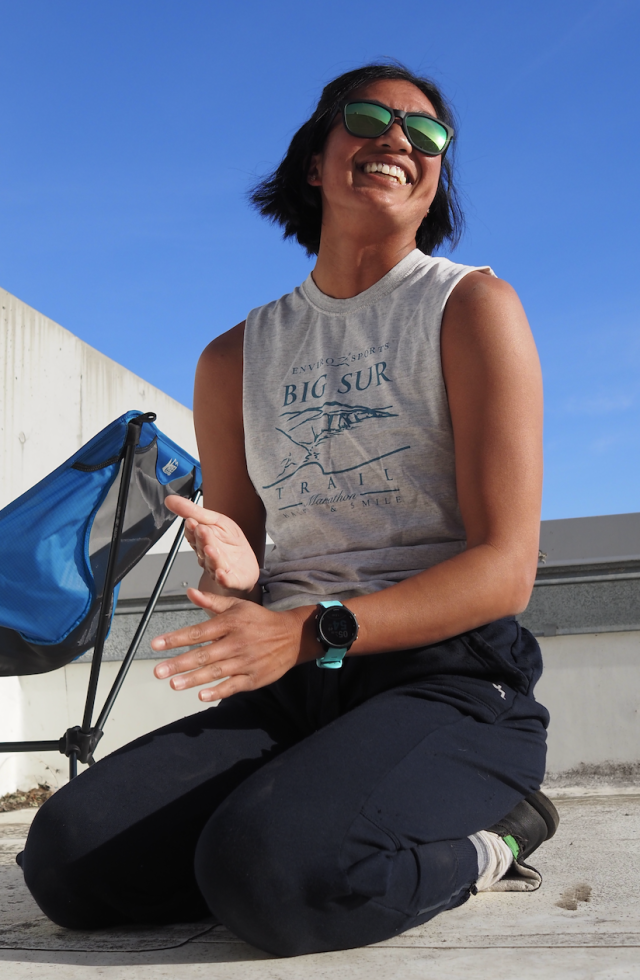
Nicole A. Chan
MCDB Ph. D.
September 2018 – June 2023
Senior Technical Account Manager
GenScript
1) Halvorsen, T. M, Garza-Sánchez, F., Ruhe, Z. C., Bartelli, N. L., Chan, N. A., Nguyen, J. Y., Low, D. A. and C. S. Hayes (2021) Lipidation of class IV CdiA effector proteins promotes target-cell recognition during contact-dependent growth inhibition (CDI). mBio 12:e0253021
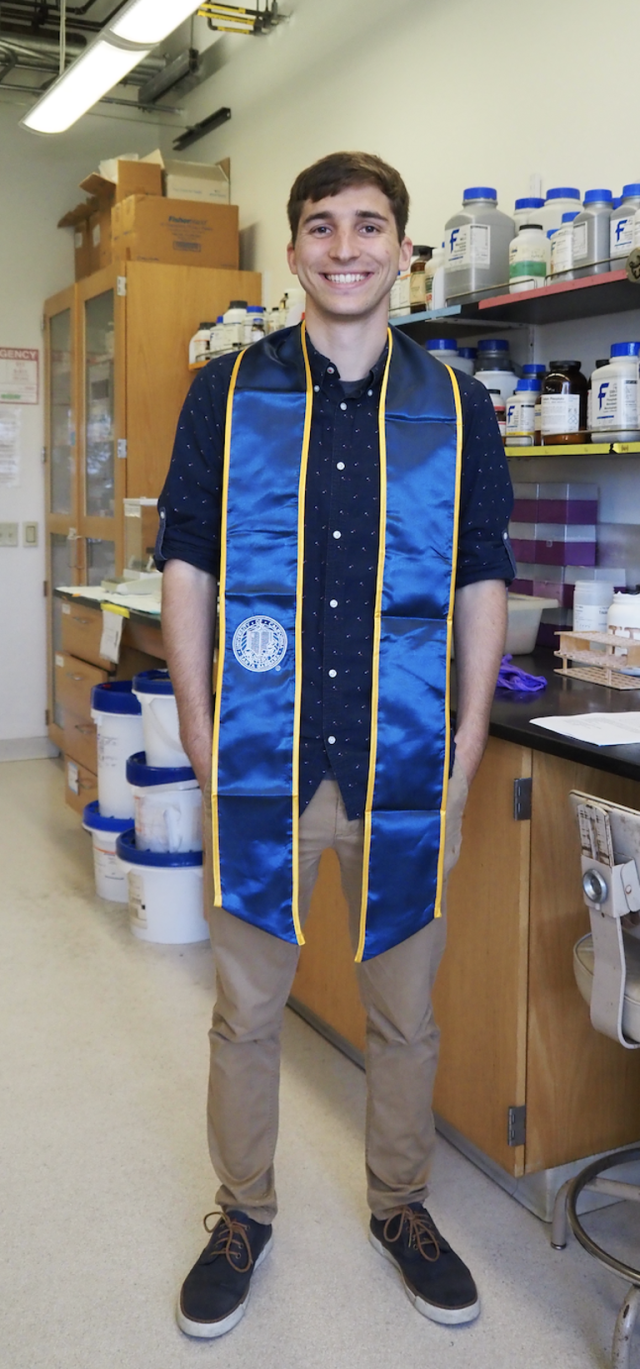
Ian H. Matthews
MCDB B.S.
September 2018 – March 2020
BMSE M.S.
June 2021 – June 2022
Medical Student
Saint Louis University School of Medicine
